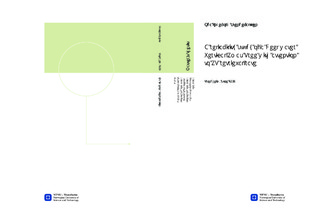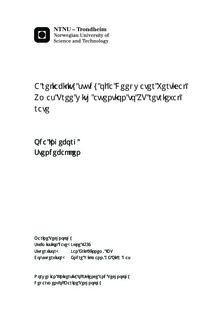| dc.description.abstract | The focus of this thesis is towards the subsea Xmas Tree (XT) system. The XT is recognized by the industry as an overall reliable configuration, but as in all development projects, it is a constant battle to optimize the design in a life cycle perspective taking account of several aspects such as safety, availability, maintainability and reliability. Unplanned stoppage of equipment result in high equipment downtime, high cost of repair, extensive repair time and high penalty associated with loss of production. The main objective is to study a specific XT system and to estimate the retrieval rate due to tree failures based on commercially available reliability data. Further this shall be compared to high level experience data presented. This is to initiate the process to alleviate the gap seen between generic calculations of the tree retrieval rate compared to known field experience. The XT configuration chosen to evaluate, is the Deepwater Vertical Xmas Tree (DVXT). A generalized case was constructed as the DVXT with help from Endre Willmann, the supervisor in GE Oil & Gas. The scope is limited in this context to the DVXT system and systems that influence the DVXT system in terms of tree retrieval rate and downtime due to failures in the tree system. Therefor, the subsea control systems with associated monitoring equipment are excluded from the analysis. To assess the DVXT system, a reliability analysis is performed. The reliability analysis is achieved in the following steps with proven methods from the reliability engineering discipline:1. FMECA/Failure analysis2. RBD/Reliability analysisA component-level FMECA is conducted to develop an understanding of main components with essential functional requirements and criticality and effect resulting from functional failure. The results from the reliability analysis conducted as a bottom-up approach indicate a retrieval rate of the production tree near 22 years. The DVXT system is shown to be a reliable configuration with high operating reliability and associated low risk through the reliability analysis. Nonetheless, several assumptions have been made. The focus of this thesis is not at the prompted absolute result, but to illustrate a reliability issue experienced by GE Oil & Gas when calculating reliability based on generic reliability data contra experience data.It is shown a significant gap between the bottom-up approach and the experience data presented. Based on the field experience collected it is indicated a MTTF for XT retrieval on the top-down approach between 100 to 200 years. This implies a factor of 5 to 10 between the bottom-up and the top-down approach. Further, it is indicated by GE Oil & Gas that a Pareto-rule seem to apply when deciding if failures require heavy workover such as XT retrieval or light intervention means such as ROV remedial actions upon repair. Applied to the sensitivity case to the bottom-up approach, assuming that in fact 80% of XT critical failures can be restored by light intervention means, the total MTBF of 15 years predicted for XT critical failures then results in an XT retrieval rate of 75 years. This is closer to the expectations indicated by the top-down approach, but still not close to the levels indicated by recent field experience.This indicate that the bottom-up model should be calibrated with input data that is based on experience data rather than only generic to alleviate some of the distance between the two approaches. This can be performed in shape of additional model parameters, modification factors or other refinements. The results from this thesis give no clear answers to such model parameters, as no literature were found on this issue. The Pareto-rule can be utilized in order to calibrate this gap, if shown applicable based on comprehensive historic data. , This has to be studied further thoroughly. | nb_NO |

